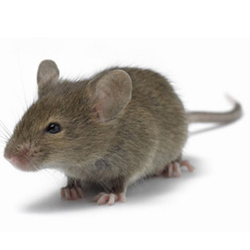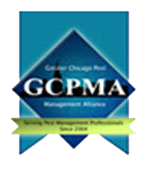
The house mouse is one of the most widely known rodents associated with humans. This tiny rodent reproduces rapidly and can infest a structure in a short amount of time. Known for their opportunistic feeding habits, house mice prefer seeds and insects but will eat almost anything. They live closely with humans but, due to their small size and nocturnal habits, can often go undetected for some time. Typically, the first sign of a mouse infestation is the presence of droppings on countertops, in pantries, or behind appliances.
House mice are small rodents with varying colors, ranging from light brown and gray to almost black. They typically measure between 2 to 4 inches in length, excluding their tail.
Diet: House mice are omnivorous, primarily feeding on plants and seeds. However, they will readily consume meat, dairy, and almost any available food source. Remarkably, mice need very little water to survive and can obtain necessary moisture from their food. In extreme conditions, they may even consume their fecal droppings to extract any remaining nutrients.
Habitat: Mice prefer to live in safe, enclosed structures, often near or inside human dwellings. They are highly adaptable and will nest in various locations, including attics, basements, wall voids, and storage areas. As social creatures, they will share nests with other mice, forming colonies that can quickly grow in size.
Mice enter structures through gaps as small as a dime. Once inside, they set up nests close to food sources and begin reproducing, with a single female capable of having up to 35 babies per year. Common signs of a mouse infestation include:
House mice are more than just a nuisance; they pose several health risks and can cause significant property damage:
Preventing a mouse infestation involves a combination of sanitation, exclusion, and monitoring:
For severe infestations or persistent problems, it’s best to seek the help of professional pest control services. At Eco Tech Pest Control, we specialize in comprehensive rodent management solutions. Our expert technicians will conduct a thorough inspection, identify entry points, and implement effective control measures to eliminate mice from your home. We use eco-friendly methods to ensure the safety of your family and pets while providing long-term solutions to keep your home mouse-free.
If you’re dealing with a mouse infestation or want to prevent one, contact Eco Tech Pest Control today. Our experienced team is ready to provide you with effective and eco-friendly solutions to keep your home rodent-free.
Mice are a common pest in the Chicago Metro area. Select a pest control plan below that works for you and your family.

Satisfaction Guarantee
We guarantee to get rid the included pest.
* After Initial Service
Get rid of the
pests now
4 services
per year
Unlimited callbacks
at no charge
* If the infestation is extreme, or the square footage of the home provided does not match, price may need to be amended following the inspection.
Our one-time pest control service will get rid of the mice now without a service agreement.
Call Now to Schedule







We are here to take your
call 24 hours a day
6271 W Howard Street
Niles, IL 60714
(847) 610-8323
Illinois License 051-024800
Copyright 2024, Eco Tech Inc. All rights reserved.